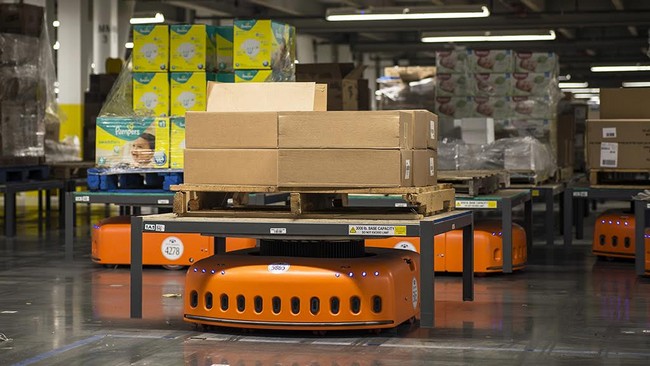Innovation 12
The Good, Bad and Ugly of the IoT
The Internet of Things, shortened as IoT, could possibly be the mascot of the appropriately named Industry 4.0. However, according to high-profile technologists such as Don DeLoach, it could be a double-edged sword.
On serious reflection, the first revolution is a slovenly edition of the current revolution. The Industry 4.0 is a blessing and disaster in equal measure.
The Good
For starters, the IoT is a technological development proposed by the Internet of Things Institute (IoTI). It will enhance our daily activities with Internet connection, facilitating data communications.
First, the Internet of Things bodes well for the latter-day global challenges. How? This includes global warming and strained resources? Over the next two decades, it’s predicted that the global population will increase by 2 billion people. To feed the extra mouths, the farm output has the ability to increase thanks to innovation enabled by the IoT. What’s more, farmers will cash in on better agricultural prospects.
Second, IoT oriented technology has the power to improve global security, enhance healthcare services, and boost the global bread baskets. The Internet of Things has brought about advanced security systems. For instance, the gunfire locator; by using sensors such as acoustic and optical and via geographic information system, this can pinpoint the location of a gunfire incident. These security apparatus can be applied in urban centers to help standby security personnel act and react to such gunfire.
Third, improving care services; the technology breakthrough facilitated by the IoT can be handy in overseeing the welfare of old people and enable medical professionals to get in touch with and distantly liaise with the sick.
FYI, the IoT sector is still in its formative stage. However, it will develop like the way the introduction of smartphones in the market has seen an influx of apps.
The Bad and the Ugly
The Internet of Things Institute has a flip side. The first one is cyber insecurity. There are cyber attacks taking advantage of the loopholes in the IoT. For example, unauthorized people with ill-will can ably get access to government communication platforms and spread propaganda.
Second, a hacker can get unauthorized access to a warehouse containing explosive materials and program them to explode simultaneously. DeLoach opines that this can be catastrophic, especially if terrorists take advantage of the complexity of the Internet of Things.
Third is vulnerability; over the past few years, for example, organizations in the Internet of Things sector confident of their hitherto secure innovations have dared hackers to hack into their systems; the easiness with which the hackers did it questions the security of the systems.
Fourth, lack of privacy; the great quantity of data gathered through the Internet of Things innovations can easily lead to privacy intrusion. Fifth, there is the possibility of business rivalry among the companies providing IoT related services. Lastly, social media platforms can take advantage of the IoT to ignite uprisings.
To sum it up, there’s great unexploited potential in the IoT but stakeholders can be doomed and damned.
Workplace Safety: Cutting Down Catastrophe
In as much as the business gurus might have convinced us of the benefits of tackling our working life with a battlefield mindset, it still stands to reason that nobody would consider a cracked spine ‘all in a day’s work’, nor should they ever. Today’s litigious society has made the aftermath cost (medical bills, court fees, and general disruption) of preventable workplace accidents almost negligible when viewed in comparison with the cost of investing in preventative measures. Here are some tried and true suggestions you would always do well to implement.
-
Knowing is half the battle
Workplace safety training and education should be a cornerstone of every organizational personnel doctrine. A well-formulated safety manual should read like a do-it-yourself guide; simple, straightforward, and explicitly clear, not leaving any room for personal interpretation. Training exercises should be undertaken regularly just to ensure everyone on the team understands and internalizes the instructions therein.
-
No autopilot
In a good number of court disputes resulting from workplace incidences and accidents, the classic defense on the employer’s part has been to attribute the accident to the employee’s absent-mindedness, or general lack of awareness. As flimsy a defense as it may seem, being inherently difficult to prove one way or another, it raises a pertinent and valid aspect of workplace safety – the employee’s presence of mind.
Depending on the industry and workplace settings, various methods have been employed in efforts to aid employees in maintaining high levels of awareness and engagement as they go about their tasks; shorter but more frequent breaks; rotation of duties to forestall repetition-induced fatigue; standing workstations; background music and various other measures. The goal simply is to have workers’ minds constantly and consistently present and alert.
-
Talk it out
A healthy communication culture is the hallmark of every successful organizational setup. Safety-wise, this comes into play in a big way. Whenever someone spots a colleague infringing upon one of the safety directives, it should be automatically communicated to them in a manner that would contribute to the overall safety of everyone involved, regardless of the respective positions of the parties involved.
A workplace safety culture should treat the entire organization as one body – injury to the most minor of functionaries will interfere with the operations of the entire body, and may be severe enough to destroy the entire organism.
Workplace safety is a perennially sore topic in the world of business. The demoralizing effects of injuries befalling colleagues in the workforce have long been acknowledged and this makes investments of time and resources in their prevention infinitely worthwhile. It’s just good business.
Self-Driving Cars: Save the Passenger and Run Over the Pedestrian?
The looming entry of emerging technologies like self-driving cars in the automotive industry will most likely reduce road fatalities but also poses a difficult moral dilemma. If your car has to make a choice, will it hit pedestrians on the road or veer off the road and put your life in danger?
The big challenge
An autonomous driving system requires programmers to develop an algorithm to make crucial decisions and funny enough, these will be based on ethics rather than on technology. According to a study, whose findings were released and published in the journal Science last week, figuring out how to build ethical self-driven cars is one of the biggest challenge in Artificial Intelligence.
Not all crashes can be avoided
With autonomous vehicles, you can expect a reduction in air pollution plus a host of other social benefits. In fact, the study was keen to point out that adoption of these cars will eliminate up to 89% of traffic accidents witnessed today. However, not all can be avoided. For instance, the autonomous vehicle (hereby abbreviated as an AV) may avoid hitting several pedestrians by swerving and hitting a passerby or it may be faced with the tough choice of sacrificing its own passenger in order to save the lives of many.
What’s your take?
When a number of people were asked about what they thought about AVs and the ethical decisions they had to make, they (people) responded in different ways. 3 in every 4 people said it would be more ethical for the car to sacrifice its passenger rather than hit 10 pedestrians. 19% said they would buy a self-driven car if it meant that a loved one might be sacrificed for the ‘greater good’. What’s your take on this? Do you think that regulation of the automotive industry with emphasis on autonomous vehicles will be the solution?
How to Spot Technology Trends
The article explains how to determine the technologies that will be popularly used in the future. Right technology forecast is achieved based on analysis of important technology factors. These factors include qualitative and quantitative data, adoption level, and technology type.
Qualitative and quantitative data
Quantitative information forecasts the level of technology based on statistical analysis. The increase in the sales volume of a technology product or service implies that the demand for the product is increasing. However, an increase in sales may indicate diminishing returns. It is thus necessary to determine the areas of technology improvements that customers prefer. Qualitative information is required to determine the future market conditions carefully. Diminishing return is shown statistically using the S-curve graph. The curve is understood by analyzing three issues. These issues are technology improvement that is not clearly understood, technology that is better understood hence performance easily improves, and technology at the limit where investments generate fewer performance returns.
Adoption level
Technology that is adopted quickly is desirable to investors. However, these technologies have a tendency of expiring or reaching their limits quickly. The quick take off of the technology is mainly because of the huge marketing budget that is financed by venture capitalists. Technologies with fast adoption rates are unsustainable and, therefore, generate minimal long-term returns. The adoption rate is influenced by the level of quantitative and qualitative information. Technology adoption is also influenced by trust. Old technology is preferred because it has been tried. The new technology generates resistance because it involves changes.
Technology type
Closed source technology is favored more than open source technology because it is expertly controlled and promoted. The technology also attracts huge investments for people or organizations that have an interest in its management. Open source technologies are affordable and easily adopted by organizations. However, open technologies are not centrally managed, and this results in fragmentation and incompatibility of information. There is no incentive for investments because of the fragmentation. Hybrid technology is the best option because it combines both closed and open source technologies. Android is a type of hybrid technology because it has intellectual property and allows free usage.
A Stitch in Time: The Implementation of Andon
Andon, adopted from the Japanese, is used in the manufacturing industry to refer to a communication system that makes use of visual and/or audio cues to notify all people of interruptions, abnormalities or general problems requiring attention in the manufacture processes.
Within the Lean and Six Sigma context, it has an evolved connotation. Here, it is manifested as a Help chain, efficiently ensuring the stability of your organizational processes by channeling assistance and support to problem areas effectively and in good time. This gives supervisory roles increased freedom to concentrate their energies on problem-solving rather than monitoring activities. Doubtless, it’s a valuable system to have in place, whatever the field of operation.
These are the essential steps and focus points towards building up an effective Andon system of your own:
-
Consensus
All involved must have a basic understanding and agreement on what exactly would constitute a problem or aberration requiring attention. For example, should a colleague believe a report is in good time if completed two days before it’s due while you think it should be ready one week beforehand, the resultant conflict effectively renders Andon pointless.
-
Well-defined parameters
Help chain triggering parameters refer to established milestones and reference points embedded into the very tasks or project processes allowing for the ready identification of obstacles and hold-ups. These mechanisms may be as simple as setting a time limit to how long inter-office e-mails are allowed to go unanswered.
-
Universally understood signaling
Good Andon systems allow for the communication of a problem’s severity, thus determining efficiently the response levels called for. In office environments, e-mail notifications and daily group meetings are effective ways of keeping track of all the various functions in action.
-
First responders
Rather than have every issue automatically sent up the chain of command, your system should allow for a worker’s discretion such as in instances whereby a colleague has handled an issue similar in nature to the one in question. This fosters cohesiveness among peers while allowing the higher-ups to focus on new problems.
-
Clarity in response
The nature of the response that your Andon triggers should be consistent and predictable in order to eliminate any possible anxieties workers may experience regarding their workplace comfort and job security. Remember, the objective is to smooth out your operations, not to seek out candidates for punishment. Making this clear to all staff will make it possible to implement Andon with maximum benefit.
Additive Manufacturing Creates Injectable Micro-camera
The world may be on the cusp of a biotech revolution after engineers from the University of Stuttgart designed a camera that is equivalent to the size of a grain of salt with the help of a new technology known as addictive manufacturing. This has the potential to change the landscape of health imaging as well as surveillance.
3D printing comes of age
3D Printing technology, also known as addictive manufacturing has been around for some time but is now starting to offer relevant solutions for practical problems. 3D printing technology can make three dimensional objects by depositing multiple layers of a particular substance according to the required shape and size. Researchers have managed to build a three lens camera using addictive manufacturing technology and fit it at the end of an optical fiber having a width of just two human hair strands. Such devices can be used extensive for exploring parts of the human body and organs which were earlier perceived as impossible.
Injectable camera can help monitor the brain
The device features a compound lens measuring 120 micro meters along with the casing and can be injected into the body using a syringe. The camera can easily focus on images from a distance of 3 mm and transmit the details over a 1.7 meter optical fiber cable attached to it. The lens can also be fitted to image sensors like the ones used in digital cameras.
Immense scope in medical and industrial applications
The minute size makes it ideal for non-destructive and non-invasive applications in both industry and healthcare. Manufacturing constraints have restricted the production of such tiny devices but all that could now change with the help of 3D printing technology. Researchers have revealed that it took only a few hours to design, manufacture and test the device and the results exceeded expectations. The lenses had tremendous compactness and delivered high performance. The lenses can also be deployed in clandestine surveillance by using them with security monitors and robots.
How Amazon Started the Robotic Arms Race
If you were to enter an Amazon warehouse, it is whirlwind of activity. You will come across workers everywhere piling items onto large black and yellow crates. Tall hydraulic arms haul heavy boxes to place them on rafters. What you may also see are a mass of chunky orange robots sliding along the floor, also stacked with boxes brimming with fashion to sports gear.
These are the very well-known Kiva robots, who once were an innovation that promised big things for the automation of inventory management. Amazon purchased their robot armies for w hopping $775 million in 2012. The acquisition elevated Amazon’s CEO Jeff Bezos to the head of an entire industry. He chose to reserve his robotics forces for the sole use of Amazon, effectively stopping Kiva from selling their products to warehouse operators and retailers who used this technology for speedy warehousing and distribution.
Since Kiva was the only player on the market, they were left with no choice. In the present environment, a few startups are gearing up to take off where Kiva left and arm warehouses around the world with new robotics. Amazon’s bots has already proved that robotic technology is indeed a better solution for the supply chain.
However, the new bots that are available look different, this could be attributed to the fact that it is still a nascent industry and partially due to patents. These bots can perform a wide variety of tasks like using mechanical claws to life items off shelves while others have touch screens for automated inventory checks. IAM Robotics’ Swift has been making waves. It is an autonomous mobile picking robot which comes equipped with a 3D item scanner and SwiftLink fleet management software.
Nevertheless, all of these bots are to aimed at fulfilling orders and to get your deliveries to your doorstep easy and quick.
What is the Real Challenge with Omnichannel?
A study conducted by JDA shows that 71% of CEOs consider omnichannel fulfillment to be the future of the consumer goods industry. However, only 19% are able to profitably translate this vision into reality.
Why the supply chain is top priority
Findings have shown that consumers are induced to buy when offered seamless shipping, delivery and returns. These are the key factors that drive the growth strategies of e-commerce ventures. Following these findings, fulfillment has gone to the top of retailers’ lists, with merchants investing in transportation and logistics, delivery options, order management, inventory and returns management.
Regular online shoppers want a turbo-charged supply chain
Free shipping remains the most lurid reason, with nine out of ten shoppers claiming that to be the incentive for shopping online. Over time, this has become the singular most powerful objective for retailers over other logistics concerns, even same-day shipping gained brownie points. One-day shipping (69%) and free returns (68%) are also top persuasive factors for shoppers.
Bringing together in-store and online experiences
While e-commerce is obviously an integral part of our lives, studies show that shopping in brick-and-mortar stores remains a clear preference, though some shoppers showed an openness to a blended shopping experience with physical and online shopping.
Although beacons have had a slow start, there is no mistaking that shoppers might be incentivized to the concept of the in-store experience online, virtual reality e-commerce – or v-commerce.
Sluggish adoption of mobile payments
Privacy and security are the key areas where consumers back off in using mobile payment applications. A greater change in consumer behavior is needed to make mobile payment transactions easier and profitable.
In time, consumer behavior and technology will need to be integrated for a more practical approach to e-retail.







